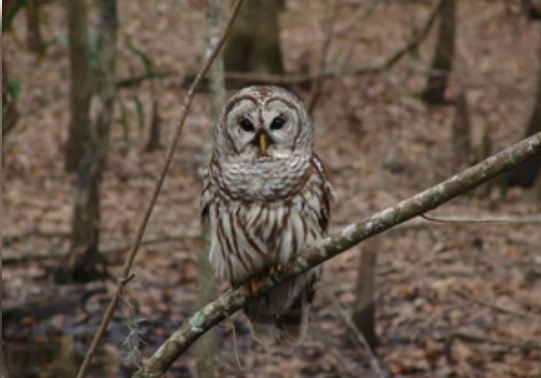America
US wildlife officials finalise plan to kill nearly half million invasive barred owls amid controversy

Los Angeles, Aug 29
The US Fish and Wildlife Service announced a controversial strategy to kill nearly half a million invasive barred owls in the Pacific Northwest to prevent at-risk native spotted owls from extinction.
The management strategy is the first comprehensive tool developed to address the significant threat posed by non-native and invasive barred owls to the survival of northern and California spotted owls in Washington, Oregon, and California, the US Fish and Wildlife Service said on Wednesday.
The principal federal agency dedicated to wildlife conservation in the United States said in a press release that the strategy calls for a step-by-step process, relying on willing land managers and landowners' management of barred owls, Xinhua news agency reported.
The agency estimated that a maximum of about 4,50,000 invasive barred owls, or about 15,000 per year, could be removed over 30 years.
Barred owls are native to eastern North America but moved westward in the 20th century and now surpass spotted owls in numbers across most of Washington, Oregon, and California.
Northern spotted owl populations have been rapidly declining due to competition from invasive barred owls and habitat loss and are listed as a threatened species, according to the press release, adding that California spotted owls face a similar risk.
"As wildlife professionals, we approached this issue carefully and did not come to this decision lightly," said the Service's Oregon Office state supervisor Kessina Lee.
"Spotted owls are at a crossroads, and we need to manage both barred owls and habitat to save them. This isn't about choosing one owl over the other. If we act now, future generations will be able to see both owls in our Western forests," Lee added.
Wildlife officials said the lethal removal of barred owls from identified management areas is the only population reduction method proven to reduce barred owl populations and improve spotted owl populations.
According to the management strategy, the killing would be done by trained professionals and occur in less than half of the areas where spotted and invasive barred owls co-exist within the northern spotted owl's range.
Although officials said that public and partner comments were considered in completing the strategy and making the decision, the new plan remains controversial and faces backlash from wildlife protection and animal welfare organisations.
Leading animal welfare and birding groups in the country, including Animal Wellness Action and the Center for a Humane Economy, charged in a joint statement on Wednesday that the US Fish and Wildlife Service's plan is "costly, unworkable, and inhumane."
"Despite the agency's attempts to demonise barred owls, the animals are native to North America and protected by the Migratory Bird Treaty Act. Like hundreds of other avian species, they have engaged in range expansion, a process that is accelerating with human disturbances of the environment," said the statement.
"The Fish and Wildlife Service is proposing the largest-ever plan to slaughter raptors anywhere in the world, and by a country mile," said Wayne Pacelle, president of Animal Wellness Action and the Center for a Humane Economy, in the statement.
"The agency is stepping onto a killing treadmill that it can never dismount. The two outcomes likely to result from the plan are a massive body count of barred owls and no long-term improvement in the survival prospects of spotted owls," Pacelle added.
Former US Fish and Wildlife Service wildlife biologist Kent Livezey estimated the cost of killing 450,000 barred owls at more than $225 million -- making it one of the most expensive threatened or endangered species management projects ever, according to the groups.
In the statement, Animal Wellness Action and the Center for a Humane Economy pledged to urge US Congress to scuttle the plan but also promised to sue to halt the scheme in federal court.
A total of 164 wildlife protection and animal welfare organisations urged US Secretary of the Interior Deb Haaland in a letter last week to "put aside the US Fish and Wildlife Service's reckless plan to unleash 'hunters' to implement a plan of mass, sustained killing of barred owls across millions of acres of forested habitats in Pacific Coast states."
The organisations argued that the "practical elements of the plan are unworkable, and its adverse collateral effects would ripple throughout these forest habitats," adding that the plan will "cause severe disruptions to wildlife from the forest floor to its canopies, producing an untold number of mistaken-identity kills of other native owl species (including spotted owls)."



































